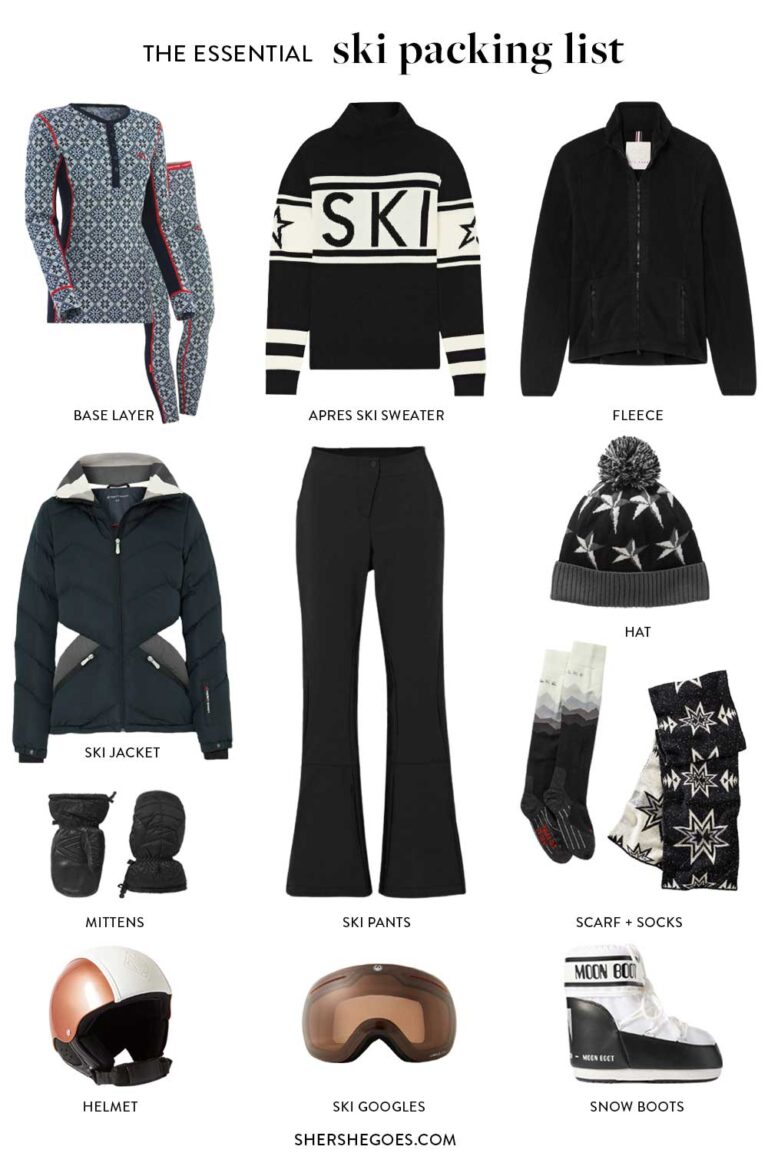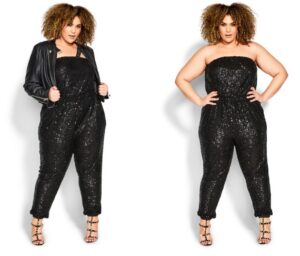To stay comfortable while skiing, wear moisture-wicking thermal layer underneath your ski pants. Skiing is an exciting winter sport that requires the right gear to keep you warm and comfortable.
Ski pants are a crucial element of your skiing outfit, as they protect you from snow, wind, and freezing temperatures. However, what you wear underneath your ski pants is equally important to ensure that you stay warm, dry and comfortable throughout the day.
Depending on the weather, you may need to wear different layers of clothing underneath your ski pants to keep yourself warm and dry. It is essential to choose the right clothing that is moisture-wicking and breathable to keep sweat away from your skin while skiing. This article will discuss the different types of clothing to wear underneath your ski pants to ensure optimal comfort on the slopes.

Credit: www.evo.com
Base Layers
Importance Of Moisture-Wicking Materials
To stay warm and comfortable on the slopes, it’s important to wear the right base layer under your ski pants. One of the most critical considerations for choosing a base layer is its ability to wick away moisture from your skin.
Here are some of the top reasons why moisture-wicking materials are so crucial for skiing:
- Moisture-wicking fabric helps to move sweat away from your skin, which can help prevent chills and hypothermia.
- By keeping you dry, moisture-wicking materials can help you regulate your body temperature more effectively, so you can stay comfortable and focused on the ski runs.
- When you wear a moisture-wicking base layer, you’re less likely to experience skin irritation and chafing, which can be caused by wet or sweaty clothing rubbing against your skin.
Best Types Of Base Layers For Skiing
Not all base layers are created equal, and some materials work better than others for skiing. Here are some of the best types of base layers to consider for your next ski trip:
- Merino wool: This natural fabric is soft, warm, and itch-free, and it naturally wicks moisture away from your skin. It’s also durable and resists odors, making it a great choice for longer trips.
- Synthetic fabrics: Materials like polyester and nylon are lightweight, quick-drying, and affordable. They are also designed to wick moisture away from your skin, so you stay dry and comfortable.
- Blends: Some base layers are made from a combination of materials, such as merino wool and polyester. These blends can offer the best of both worlds, providing warmth, moisture-control, and durability in one package.
Layering Base Layers For Added Warmth
Layering your base layers can help you stay warm and comfortable in even the coldest weather. By adding extra layers of clothing, you can trap heat close to your body and create a barrier against the cold. Here’s how to layer your base layers effectively:
- Start with a lightweight moisture-wicking layer closest to your skin.
- Add a thicker layer of insulation, such as a fleece, on top of the base layer.
- Finish with a waterproof and wind-resistant layer on the outside.
By layering your base layers effectively, you can stay warm and comfortable no matter what mother nature throws your way on the ski slopes.
Insulating Layers
Why Insulation Is Necessary For Skiing
Skiing is a fun and exhilarating sport, but it also means that you need to protect yourself from the cold elements. Wearing insulating layers will help keep you warm and comfortable so you can focus on enjoying your time on the slopes.
Here are some reasons why insulation is necessary for skiing:
- Insulation helps to retain your body’s natural heat, so you don’t get too cold while skiing.
- It provides a layer of protection against the cold wind and snow.
- Insulating layers also help to wick away moisture from your skin and keep you dry, which is essential for staying warm in cold weather.
Best Materials For Insulating Layers
The right type of fabric can make all the difference when it comes to staying warm and comfortable while skiing. Here are some of the best materials for insulating layers:
- Merino wool: This natural fiber is soft, lightweight, and naturally insulating, making it perfect for base layers. It also wicks away moisture to keep you dry.
- Synthetic materials: These fabrics are often made from polyester or nylon and are excellent at wicking moisture away from your skin. They’re also durable and quick-drying.
- Down: Down insulates by trapping air between the feathers, making it one of the warmest materials for mid and outer layers. However, it’s not as effective when wet, so it’s best to wear it in dry weather.
Layering Insulating Layers For Added Warmth
Layering your insulating layers is an effective way to stay warm while skiing. The key is to wear multiple layers that can be easily removed if you start to get too warm. Here are some tips for layering insulating layers:
- Start with a moisture-wicking base layer to keep you dry and comfortable.
- Add a mid-layer made of a warm material like fleece or down to trap heat close to your body.
- Finish with an outer layer that provides protection against the wind and snow.
- Choose items that can zip or button together so that you can easily remove or add layers as needed.
- Don’t forget to wear insulating layers on your hands, feet, and head to keep you warm from head to toe.
By following these tips and choosing the right materials for your insulating layers, you’ll be able to stay warm and comfortable while skiing, no matter how cold it gets on the slopes.
Outer Layers
Choosing The Right Ski Pants
Skiing requires a unique set of clothing, with weather-resistant pants being one of the essential items. However, finding the perfect pair of ski pants can be overwhelming with all different types and features. Here are the key factors to consider when buying ski pants:
- Waterproof material to keep you dry from snow
- Breathability to prevent sweating and overheating
- Insulation for warmth in cold temperatures
- Proper fit with room for movement and comfortable layering
Recommended Materials For Ski Pants
When it comes to the materials used in ski pants, not all are created equal. Here are the most common and recommended materials for ski pants that balance warmth, breathability, and durability:
- Gore-tex: A waterproof, breathable, and windproof material that is the most popular choice for ski pants
- Nylon: Lightweight and durable fabric with good water resistance
- Polyester: Does not absorb water so it dries quickly, often blended with waterproofing materials
- Synthetic insulation: Retains warmth even when wet, better at moisture-wicking than down insulation
Layering With Outerwear For Added Warmth
Layering is key to staying warm and comfortable during skiing trips. Here’s how you can layer with outerwear for added warmth:
- Base layer: Moisture-wicking to keep you dry, made of synthetic materials or wool
- Mid-layer: Warmth layer, such as a fleece or down jacket to insulate heat
- Outer layer: Ski jacket and pants made from waterproof and breathable materials to protect from snow and wind.
When it comes to what to wear under ski pants, layering with the right outerwear is essential to protect you from the cold, especially in extreme winter conditions. With these tips, you’ll be set to hit the slopes in comfort.
Accessories
Accessories: Importance Of Proper Socks And Gloves
One of the most critical parts of staying warm and comfortable while skiing is wearing the right accessories. Proper socks and gloves are two of the most crucial pieces to consider.
Choosing The Right Ski Socks
When choosing ski socks, remember that they’ll not just keep you warm, but also provide the foundation for a successful day on the slopes. Here are some of the essential features that your socks should possess:
- Length: Ski socks are longer than standard socks to prevent any skin from showing between your pants and socks. Look for socks that come up to the calf or even higher.
- Padding: The calf and shin areas are usually the most stressed while skiing. Therefore, it’s essential to have well-cushioned socks that provide enough support for your feet.
- Moisture-wicking: It’s vital to find ski socks that are made of moisture-wicking materials that keep your feet dry and comfortable all day long.
- Material: Merino wool is a great material to look for. It’s comfortable, breathable, and doesn’t trap odors like synthetic materials do.
Best Gloves For Skiing
Your hands are one of the first body parts to get cold while skiing. Finding the perfect pair of skiing gloves can make all the difference. Here are some useful features to consider:
- Waterproof: Your gloves should be waterproof to protect your hands from snow and wetness.
- Insulation: Look for gloves with proper insulation that will keep your hands warm without overheating them.
- Cuff: The cuff of your gloves is important for keeping snow from getting inside. It should fit snugly but not so tight that it hinders movement.
- Material: Leather or gore-tex materials are great for gloves as they have natural water-resistant properties.
By choosing the right socks and gloves, you’ll be on your way to a warm and comfortable skiing experience. Be sure to keep these essential features in mind before hitting the slopes.
Frequently Asked Questions On What To Wear Under Ski Pants
What Should I Wear Underneath Ski Pants?
You should wear moisture-wicking base layer, wool or synthetic mid-layer and ski socks under your ski pants. Avoid cotton, as it absorbs sweat and retains moisture that can make you feel cold.
Can I Wear Leggings Under My Ski Pants?
Yes, you can wear leggings under your ski pants. However, make sure to choose a pair made of moisture-wicking fabric to keep your skin dry and warm.
Do I Need To Wear Thermal Underwear Under My Ski Pants?
Yes, thermal underwear is recommended to keep you warm and dry. Look for thermal underwear made of moisture-wicking fabric designed for winter sports.
Can I Wear Jeans Under Ski Pants?
It’s not recommended to wear jeans under ski pants because they are made of cotton and absorb moisture, making you feel cold. Opt for moisture-wicking base layers instead.
How Do I Stay Warm Under My Ski Pants?
To stay warm under your ski pants, wear moisture-wicking base layers, wool or synthetic mid-layers and ski socks. You can also add a layer of thermal underwear for extra warmth.
Conclusion
After reading this article, it should be clear that what you wear under your ski pants is just as important as what you wear on top. From thermal base layers to wool socks, there are a variety of options available for all types of weather conditions.
It is also important to keep in mind the type of activity you will be doing and adjust your layers accordingly. Remember, you want to stay warm and dry while still maintaining mobility on the slopes. So, take the time to choose your layers wisely and invest in high-quality gear that is designed specifically for winter sports.
With the right clothing, you can enjoy a comfortable and safe skiing or snowboarding experience. So, keep these tips in mind, and let nothing stand in the way of your winter adventure!





